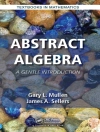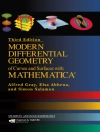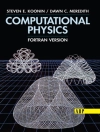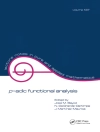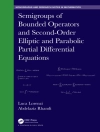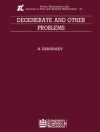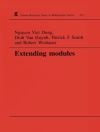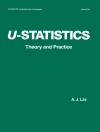This text, designed for a second year calculus course, can follow any standard first year course in one-variable calculus. Its purpose is to cover the material most useful at this level, to maintain a balance between theory and practice, and to develop techniques and problem solving skills. The topics fall into several categories: Infinite series and integrals Chapter 1 covers convergence and divergence of series and integrals. It ?ontains proofs of basic convergence tests, relations between series and Integrals, and manipulation with geometric, exponential, and related series. Chapter 2 covers approximation of functions by Taylor polynomials, with emphasis on numerical approximations and estimates of remainders. Chapt~r 3 deals with power series, including intervals of convergence, expan SIOns of functions, and uniform convergence. It features calculations with s~ries by algebraic operations, substitution, and term-by-term differentiation and integration. Vector methods Vector algebra is introduced in Chapter 4 and applied to solid analytic geometry. The calculus of one-variable vector functions and its applications to space curves and particle mechanics comprise Chapter 5. Linear algebra Chapter 7 contains a practical introduction to linear algebra in two and three dimensions. We do not attempt a complete treatment of foundations, but rather limit ourselves to tho Re topics that have immediate application to calculus. The main topics are linear transformations in R2 and R3, their matrix representations, manipulation with matrices, linear systems, quadratic forms, and quadric surfaces. Differential calculus of several variables Chapter 6 contains preliminary material on sets in the plane and space, and the definition and basic properties of continuous functions. This is followed by partial derivatives with applications to maxima and minima. Chapter 8 continues with a careful treatment of differentiability and applications to tangent planes, gradients, directional derivatives, and differentials. Here ideas from linear algebra are used judiciously. Chapter 9 covers higher xii Preface order partial derivatives, Taylor polynomials, and second derivative tests for extrema. Multiple integrals In Chapters 10 and 11 we treat double and triple integrals intuitively, with emphasis on iteration, geometric and physical applications, and coordinate changes. In Chapter 12 we develop the theory of the Riemann integral starting with step functions. We continue with Jacobians and the change of variable formula, surface area, and Green’s Theorem. Differential equations Chapter 13 contains an elementary treatment of first order equations, with emphasis on linear equations, approximate solutions, and applications. Chapter 14 covers second order linear equations and first order linear systems, including matrix series solutions. These chapters can be taken up any time after Chapter 7. Complex analysis The final chapter moves quickly through basic complex algebra to complex power series, shortcuts using’ the complex exponential function, and applications to integration and differential equations. Features The key points of one-variable calculus are reviewed briefly as needed. Optional topics are scattered throughout, for example Stirling’s Formula, characteristic roots and vectors, Lagrange multipliers, and Simpson’s Rule for double integrals. Numerous worked examples teach practical skills and demonstrate the utility of the theory. We empha Rize Rimple line drawing R that a student can learn to do himself.
Harley Flanders & Robert R. Korfhage
Second Course in Calculus [PDF ebook]
Second Course in Calculus [PDF ebook]
Koop dit e-boek en ontvang er nog 1 GRATIS!
Taal Engels ● Formaat PDF ● ISBN 9781483263823 ● Uitgeverij Elsevier Science ● Gepubliceerd 2014 ● Downloadbare 3 keer ● Valuta EUR ● ID 5734757 ● Kopieerbeveiliging Adobe DRM
Vereist een DRM-compatibele e-boeklezer


